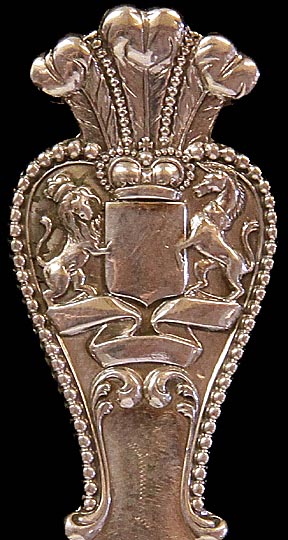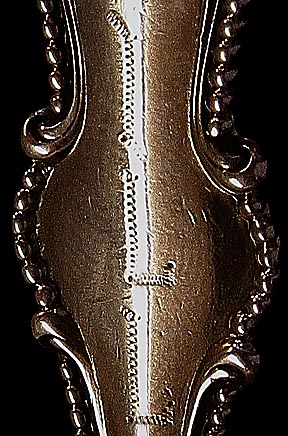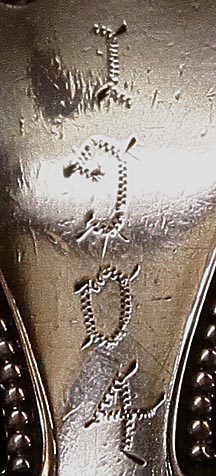

THE MYSTERY OF THE MAGICAL SPOON

One of my earliest memories is using the spoon shown above to ladle tons of sugar onto bowls of cereal for breakfast. The glittering diamond pattern of the bowl and the year "1904" engraved on the back convinced me that it had to be something special... something magical. When no one was looking I'd rub it, hoping a genie would appear. Failing at that, I whispered every magic incantation remembered from fantasy movies I'd seen and Saturday morning cartoons. Alas, I never found the secret words to evoke its magic power. Some time during my teens the spoon disappeared, never to be seen for many decades.
Then suddenly it reappeared. My wife was cleaning out an old box of forgotten mementos and there it was on the very bottom. The bowl was half broken off and it was tarnished almost beyond recognition. I cradled it in my hand and discovered that it really did have a magic power: the power to take me back in memory over half a century to simpler and more innocent times.
We decided to have it restored. When the silversmith saw it she said that it was sterling silver and that the bowl's diamond pattern was very unusual. Although there were no hallmarks, the style told her it was turn-of-the-century American.

The feathers at the top were Prince of Wales plumes.

"ILL" was engraved on the front of the spoon's handle.

The date "1904" is engraved on the back of the handle.

Finally, there is an English style "NG" engraved on the back of the bowl. These types of engravings are called 'roulette' because a hand tool, with a rolling wheel imprinted with various patterns at its end, is pressed against the silver a rolled to produce a design or letters.
Family memories suggest it was purchased at the 1904 St. Louis World's Fair as a memento. "NG" are the initials for whom it was purchased and the "ILL" stands of Illinois, the state in which he or she lived.
Such mementos were common items at the world's fair. Each state had a booth where people could purchase such items. One problem with this explanation for its origin is that all of the examples of commemorative spoons feature intricately engraved or embossed images representative of the state on the bowl of the spoon, not a few letters engraved on the handle. I suspect that in addition to the official memorabilia sold by state booths at premium prices, other venders sold more generic items that people could inexpensively have engraved as a memento. One such vender may have had thousands of unegraved spoons like this that customers could have engraved anyway they wanted.
As the time draws near to passing this spoon on to the next generation, I find I'm interested in learning as much about it as possible. If anyone has any information about such spoons, I'd appreciate they're emailing it to me at:
(Please ignore the x when copying the email address into your email system. It's there to thwart spam spiders.)
Thank you for any information you can provide.
Anyone interested in seeing an outstanding collection of official commemorative spoons will enjoy visiting: http:/spoonplanet.com.
Return to my main page to browse 60 other subjects